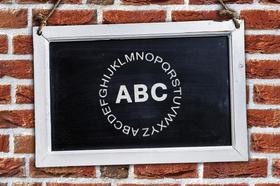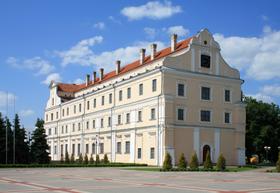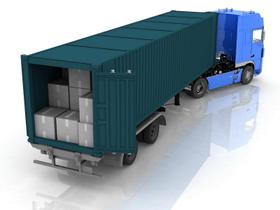The A to Z of Private Schools (2025 Edition)
Private schools in the United States have long offered families an alternative to public education—emphasizing small class sizes, personalized instruction, and distinctive educational philosophies. But the landscape in 2025 looks different than it did even a decade ago. Rising tuition, new demographic shifts, and expanded program offerings make private education both more diverse and, in many cases, more accessible.
This A to Z guide walks you through the essentials of private schools in 2025, helping families and educators understand the key terms, trends, and opportunities that define the sector today.
A – Admissions
Private school admissions remain competitive, but many schools now emphasize “fit” over test scores. Some institutions have reduced reliance on entrance exams, instead considering teacher recommendations, student essays, and interviews. Waitlists are common at top-tier schools, particularly in urban centers.
B – Boarding Schools
Boarding schools are evolving. Once primarily East Coast institutions, they are now attracting international students and offering global curricula such as the International Baccalaureate (IB). In 2025, 20% of U.S. boarding school students come from outside the country, fostering diverse campus cultures.
C – Curriculum
Private schools often have flexibility beyond state-mandated requirements. Many emphasize STEM, arts integration, and experiential learning. Project-based learning and advanced electives—such as artificial intelligence or environmental science—are increasingly common.
D – Diversity
Diversity remains a priority. According to the National Center for Education Statistics, students of color now make up 38% of private school enrollment (2024). Schools also continue to expand socioeconomic diversity through financial aid.
E – Extracurriculars
From robotics clubs to competitive athletics, extracurriculars are central to private school life. These programs are often funded through tuition and donor contributions, providing students with broad opportunities beyond the classroom.
F – Financial Aid
Rising tuition remains a concern—averaging $12,800 annually for elementary schools and $23,500 for high schools (Private School Review, 2025). However, nearly 40% of students receive some form of financial aid, making private education more accessible to middle-income families.
G – Global Education
Private schools are at the forefront of global learning. Language immersion programs, study-abroad partnerships, and cultural exchanges are now standard at many institutions.
H – History and Tradition
Private schools often carry legacies stretching back a century or more. These traditions—chapel services, honor codes, or ceremonial events—remain an important part of school identity, even as institutions modernize.
I – Innovation
Technology integration is a major focus. From AI-powered tutoring systems to virtual reality labs, private schools have more flexibility to pilot cutting-edge tools than most public counterparts.
J – Job Opportunities
For teachers, private schools offer smaller classes and strong community connections. Faculty often wear multiple hats, contributing to academics, athletics, and student life. See our Private School Survival Guide for Teachers for practical insights.
K – Kindergarten and Early Childhood
Many private schools offer early childhood programs, attracting families before kindergarten. These programs emphasize social-emotional learning, language development, and creativity.
L – Location
Urban private schools often face waitlists, while suburban and rural institutions may offer more availability. Location also influences tuition—major metro-area schools tend to be the most expensive.
M – Mission Statements
Private schools articulate distinct missions, whether faith-based, college preparatory, Montessori, or progressive. Understanding a school’s mission is essential when choosing the right fit for a student.
N – Networking
Families often view private school communities as valuable networks, connecting students with alumni, mentors, and professional opportunities.
O – Online Learning
The pandemic accelerated digital adoption, and many schools now offer hybrid or online options—particularly for advanced coursework or flexible scheduling.
P – Parental Involvement
Private schools generally expect strong family engagement. From volunteer committees to parent councils, involvement is seen as part of the educational partnership.
Q – Quality of Education
Smaller class sizes—averaging 15 students per teacher—allow for individualized attention. According to NAIS, this remains a cornerstone of the private school experience.
R – Religious Schools
About 65% of private schools are faith-based (NCES, 2024), spanning Catholic, Protestant, Jewish, Muslim, and other traditions. These institutions blend academics with values-based education.
S – Scholarships
In addition to financial aid, some schools offer merit-based scholarships for academics, arts, or athletics. Outside organizations also fund scholarships to expand access.
T – Tuition
Tuition continues to rise, though growth has slowed. Many schools now use sliding-scale tuition models to broaden affordability, tailoring costs to family income.
U – Universities
Private schools maintain strong college placement records. Many graduates attend selective universities, supported by robust college counseling programs.
V – Values
Values-based education—whether religious or secular—remains central. Character development, leadership, and service learning are often integrated into curricula.
W – Workforce Preparation
Private schools increasingly emphasize career readiness, offering internships, coding bootcamps, and entrepreneurship programs.
X – eXperiential Learning
Fieldwork, internships, and community service have become staples of private education, preparing students with real-world skills.
Y – Year-Round Options
While most follow traditional calendars, some private schools now experiment with year-round schedules or flexible semesters to accommodate family needs.
Z – Zoning (or Lack Thereof)
Unlike public schools, private schools are not bound by district zoning. Families can choose schools that best fit their child’s learning style, values, and goals.
Final Thoughts
Private schools in 2025 reflect both tradition and innovation. From embracing technology to expanding diversity, these institutions continue to evolve while maintaining their defining qualities: close-knit communities, strong academics, and individualized learning. Whether you are a parent considering enrollment or an educator exploring opportunities, this A-to-Z guide provides a clear picture of what private schools offer today.












